Time and time again, you’ve heard nothing but good things about fly fishing. Every expert angler you meet will likely have told you what great fun it is, but when you start researching how to start fly fishing for yourself, you’re only left with more questions:
- What is the best fly fishing rod to buy?
- Should you go with streamers or nymphs?
- And what exactly is a nymph anyway?
In this fully comprehensive guide to fly fishing, we’ll answer all of those questions, outlining everything you need to know to truly enjoy this most invigorating of pastimes for yourself.
The Main Differences Between Fly Fishing vs Regular Fishing?
The main differences between fly fishing vs regular fishing are:
- Fly fishing involves catching fish by using artificial flies, whereas regular fishing is when the fisherman uses other types of lures for fishing like worms, nightcrawlers, grubs, maggots, etc.
- In fly fishing, the flies are lightweight and rely on a heavier fishing line in order to carry them into the water over any significant casting distance, whereas in regular fishing the lure or live bait is heavy enough to ensure a significant casting distance, meaning a lighter line will suffice.
- Fly fishing is a much more active sport, whereas regular fishing is like an old-fashioned way of fishing.
Fly Fishing vs. Spin / Lure Fishing
On the face of it, both fly and lure fishing are very similar and rely on the same concept. The big difference is that when we’re talking about lure fishing (also commonly known as spin fishing) we’re talking about using lures other than flies.
Typically, this means catching a fish using a lure that looks like another smaller fish or other food sources. Think of it this way:
- All fishing flies are lures, but not all lures are fish.
Fly Fishing vs. Bait Fishing
Unlike fly and lure fishing, bait fishing doesn’t rely on artificial creatures at all. Instead, it involves using natural baits such as worms, nightcrawlers, grubs, maggots or other instincts.
Alternatively, serious bait fishers can buy ready-made bait solutions such as the popular Powerbait Crappie Nibbles Dough Bait Glow from Berkley.
The Pros and Cons of Fly Fishing

By getting your head around the main differences between fly fishing and other types of fishing, you’ve probably already decided whether this particular pastime is something you’d like to try for yourself.
However, if you’re still on the fence about whether or not you should give it a shot, here’s a look at some of the main pros and cons of casting your fly into the water.
Pros:
Fly fishing covers more fish
Fly fishing aficionados often tell us that the one thing they love most about it is that it allows them to cover a larger area and catch more fish in less time. Rather than sitting on the riverbank taking it easy, you’ll often find that fly fishing takes you into the water itself, where you can move around and actively seek out your fish.
What’s more, because flies are so lightweight, you can cast them over greater distances than other lures and live baits, further increasing the likelihood of a good catch.
It is Great for Stealth Fishing
Dropping a heavy lure or bait into the water tends to result in a noisy splash that can spook fish and send them scurrying away. With enough practice, you can drop a fly gently and quietly into the water without startling the very fish you’re trying to catch.
Pro: The Lures are Cheaper
Flies generally cost much less to buy than other types of lures. In most tackle shops, you can pick up a good quality fly for about a dollar, whereas other types will cost you at least twice that amount.
Cons:
Perfecting the Art of Casting Takes Work
Make no mistake about it, of all the different types of fishing you could try your hand at, fly fishing is the trickiest to master. With spin fishing, for example, you could probably get the hang of casting in the space of an afternoon. With fly fishing, however, perfecting the art of casting requires a lot of skill.
Many experienced fly fishers even recommend that you spend time practicing casting in your back garden long before you ever take to the water.
Everything Else is More Expensive
While the lures themselves are cheaper, you’ll generally find that fishing lines, rods, and other essential equipment tend to cost more.
If budget is a major concern, then you may prefer to start out with bait fishing. However, if you’ve got the money to spend, you’ll find that nothing quite beats the thrill and excitement of a good afternoon of fly fishing.
Involves More Effort
Of course, the major drawback to this is that you have to actively get involved in fly fishing, much more so than bait fishing, Again, if you see fishing as an excuse to go and take it easy in the great outdoors, you might be better off with bait fishing.
What Type of Fish can You Catch Fly Fishing?
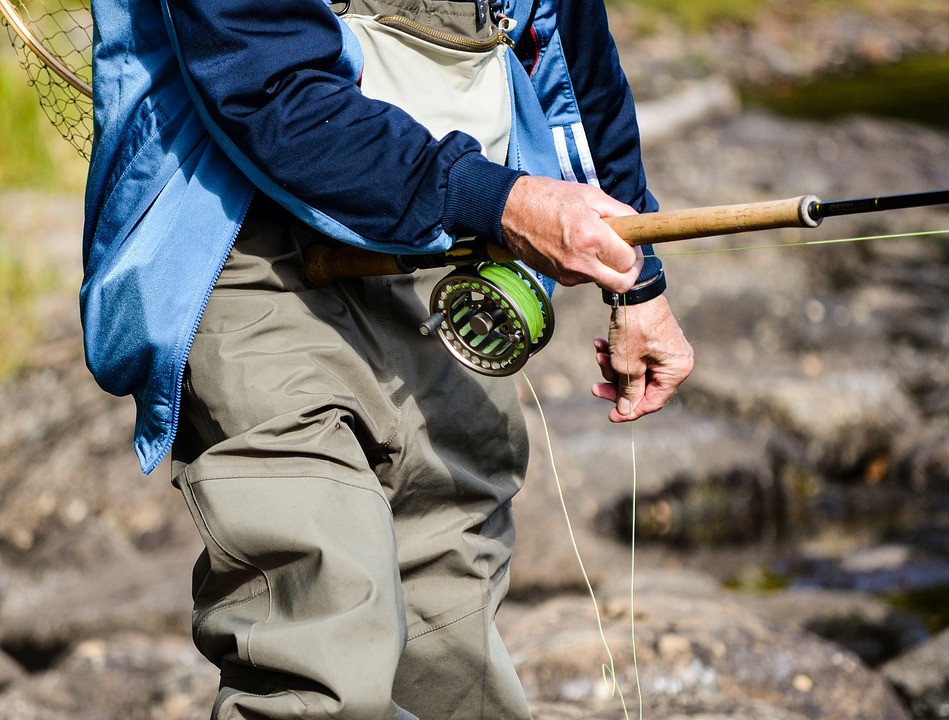
Fly fishing is most commonly used to catch trout and salmon, but there’s no reason why you have stick solely to these two types of fish. Over the years, adventurous fishermen have also found fly fishing to be particularly effective in catching other species such as bass, pike, panfish, and carp.
Is Fly Fishing Only for Freshwater Fishing?
When most of us think of fly fishing, we likely have a similar image in mind:
An eager fisher, suitably attired in waders and a well-equipped fishing vest, standing knee-deep in a river as he happily casts off into the rushing waters surrounding him.
It’s such a familiar and popular image that most people would likely recognize it even if they knew nothing about fly fishing. Yet such an image does help promote the common misconception that the sport is limited to freshwater spots like lakes, rivers, and streams.
This simply isn’t true. Saltwater fish such as flounders, barracudas, and bonefish will also bite if the right kind of flies are used. In other words, no matter where you want to fish, using flies is a great way to land a wide variety of catch.
How to Choose the Best Fly Fishing Rod for Beginners
Below, we’ll list the very best fly fishing rods on the market that we think are perfect for those dipping their toe into the world of fly fishing for the first time.
Before we do, we think it would be helpful to outline exactly why we chose these particular models. On the whole, there are four key things to consider when choosing a good quality fishing rod.
- Length
- Weight
- Action
- Material
We’ve picked the models that we feel offer a combination of all three that is ideal for newcomers while at the same time offering great value for money. Here’s why each of these aspects matters when it comes to finding the right rod for you.
Length
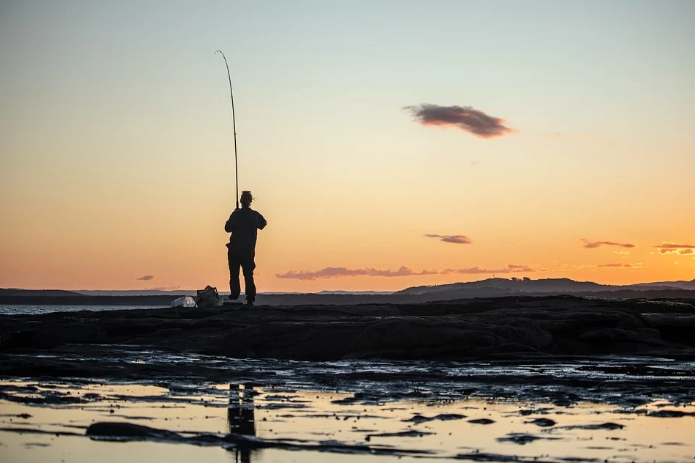
Most fishing rods range between six and fifteen feet, typically in six-inch increments. While you might think that shorter rods would be better suited for beginners, this is rarely the case. While rods at the shorter end of the scale work well for casting in confined spaces, they can be trickier to utilize effective, making them a better choice for more experienced anglers.
The same goes for those at the top end of the scale. Rods between ten and fifteen feet are perfect for casting long distances in large expanses of open water, but again require a fair bit of skill to use effectively.
The sweet spot, therefore, is somewhere in the eight to ten feet range. Rods around this length come in two, three, or four-piece set-ups and are generally pretty easy to get to grips with, making them perfect for those new to the sport.
Weight
In the fishing world, rods are measured according to their own standard classification system. This system determines the type of fish you can catch with it, and in some cases also the kind of environment you should use it in.
Rods that are classed as 0-3 weight, for example, are better suited to fly fishing in small streams. A 4-6 weight proves to be the best fishing rod for catching trout, while 7-10s are best for salmon and rods that are an 11 weight or above should only really be used for saltwater fishing or on huge lakes.
Action
Fishing rod action refers to how much the rod bends when there’s a weight on the tip, and how quickly it returns to being straight after bending. For example, you’ll find that a fast action rod bends only at the tip or at most in the first quarter of the rod, then bounces back to its natural position very quickly.
A moderate action rod will bend as much as half of its length, while a slow action rod bends all the way down to the handle and takes its time returning to being straight again. If you’re new to fly fishing, then it’s a moderate or slow action rod that you should be looking for.
Slow action rods are purpose-built for beginners, but you should have just as much success with a moderate action model providing you keep in mind that you won’t be able to cast over long distances, to begin with. Once you improve your casting technique, you’ll then be able to make better use of a fast action rod and enjoy longer casting distances.
Material
There’s a good reason why many of the best fly fishing rods are made of graphite. It’s one of the very materials that manages to be incredibly lightweight and flexible while at the same time being incredibly strong and durable.
Fiberglass is another popular material, and in some cases, you may find a rod that is made from a graphite/fiberglass composite. Other materials like nano-silica resin and aluminum can also be used, but we’ll stick to our guns in saying that graphite or fiberglass are the way to go.
What is the Best Fly Fishing Rod for Beginners? Our Picks
|
Rank |
Rod |
Length |
Weight |
Action |
Material |
|
1. |
9” |
5/6 |
Medium-Fast |
Graphite |
|
|
2. |
9” |
7 |
Medium |
Graphite |
|
|
3. |
9” |
5 |
Medium |
Aluminium |
1: Temple Fork NXT Fly Fishing Outfit
Ask any number of experienced fly fishers to recommend you a good quality starter kit, and it won’t be long before the Temple Fork NXT crops up in the conversation. A high-quality, high-performance outfit, the NXT comes with everything you could possibly need to start your new fly fishing adventure.
At the heart of the entire kit is an impressive nine-foot, four-piece rod built from IM6 Graphite which offers remarkable strength without sacrificing the kind of lightweight design you need to use it effectively. For added durability, the rod has aluminum oxide stripping guides and chromium-impregnated stainless steel snake guides built into it, while the composite cork handle makes for a comfortable grip.
Usually, we’d recommend a slow or medium action model for beginners, but this medium-fast action fishing rod is surprisingly easy to get to grips with and will help you improve your casting technique faster than you would with a slower model.
Speaking of making things easy, we really like that it takes practically no effort to slot together the four-piece kit, so you’ll be able to figure outputting it together even if it’s the first time you’ve ever picked up a fishing rod.
The complete kit comes with a lightweight, cast aluminum reel, light floating line and a protective Custom Cordura case to keep the whole in top condition, ultimately making this one of the best value-for-money starter kits we’ve ever come across.
Specifications:
- Length: Nine feet
- Weight: 5/6
- Action: Medium
- Material: Graphite
Pros:
- All-in-one kit makes for easy setup
- Four-piece set for easy packing and storage
- Highly durable aluminum reel
- Interchangeable spools
Cons:
- Isn’t as durable as other products
- May prove cheaper to buy another brand of rod and reel separately
2: Piscifun Sword Graphite Fly Fishing Rod
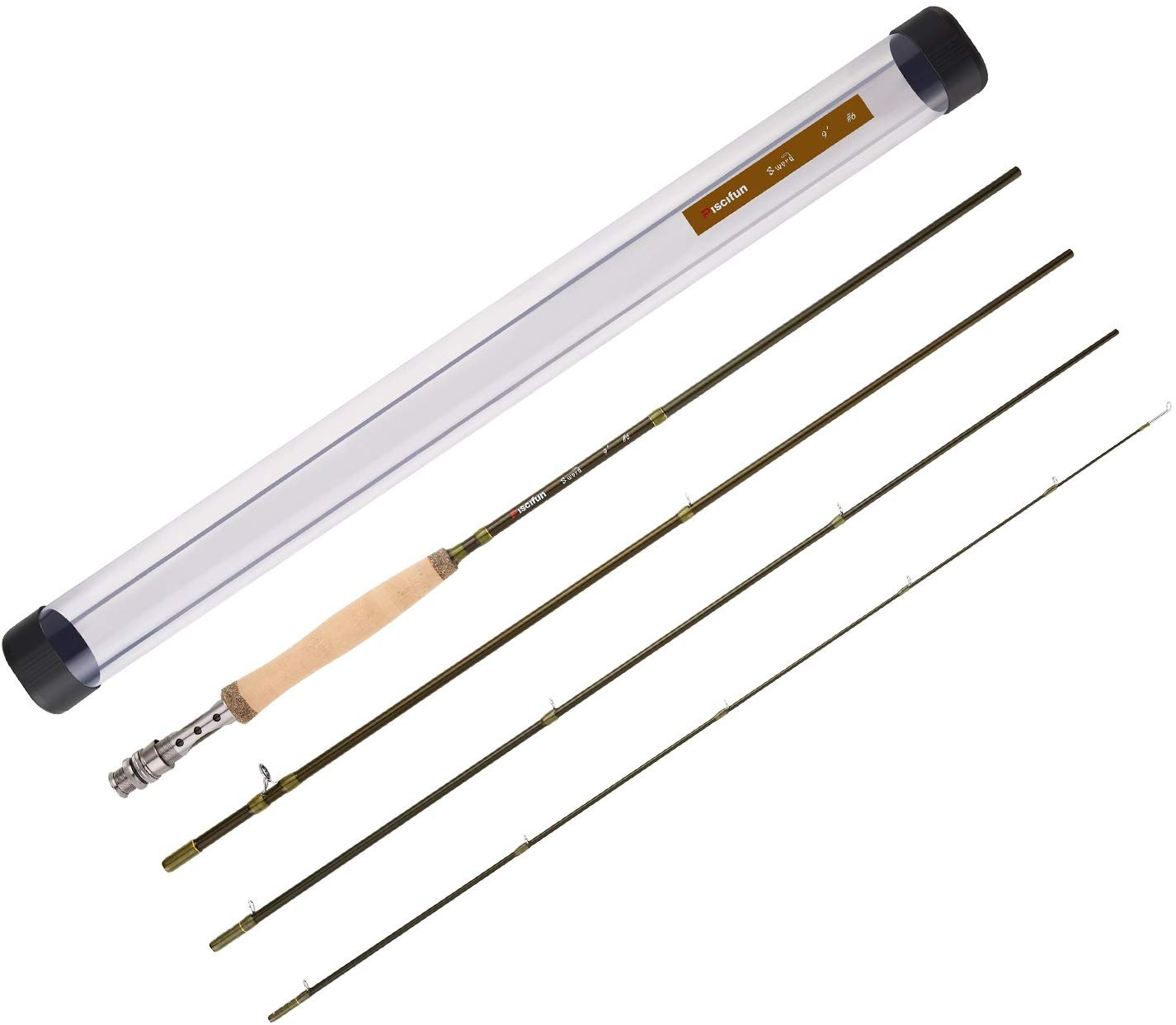
Unlike the NXT, the Piscifun Sword Graphite Fly Fishing Rod doesn’t come with a reel and other essentials, but it does come with such a small price tag that you’ll likely still save money even after you’ve finished buying the rest of your kit.
Typically retailing at under $50, there’s no doubt the Piscifun Sword is one of the best budget-friendly models we’ve come across, but don’t mistake its low cost for low quality. Built from highly durable IM7 Graphite, the rod ensures fantastic accuracy and performance, especially if you opt for the nine-foot, seven weight option as we have here.
Other options, ranging from an 8’6″ four weight to a nine-foot nine weight are also available, but we prefer this one as it tends to be the easiest one to get started with. Adding to the Piscifun Sword’s appeal as a good entry-level fly fishing rod is its medium action, which makes it a popular choice for catching steelhead fish, carp, salmon and bass.
The whole thing comes in a protective PVC rod tube. While this is handy for getting started, we tend to find that canvas cases such as this best-selling case from Docooler offer greater protection for your kit, so you might want to consider upgrading.Otherwise, if you haven’t made your mind up about whether you want to go all-in with fly fishing, investing in this excellent rod is a great way to test the waters without breaking the bank.
Specifications:
- Length: Nine feet
- Weight: 7
- Action: Medium
- Material: Graphite
Pros:
- Best budget-friendly fly fishing rod
- Four-piece set for easy packing and storage
- Expert precision
Cons:
-
No warranty
3: Orvis Clearwater Fly Rod
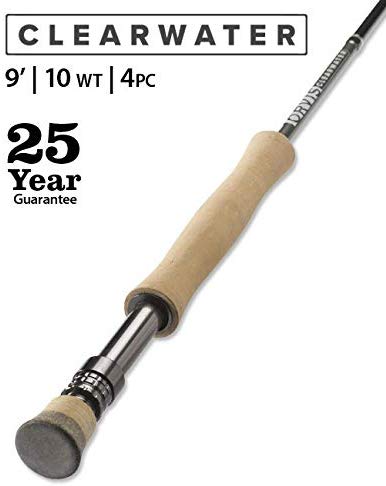
Much as with the Piscifun Sword, the Orvis Clearwater Fly Rod comes in a variety of sizes and weights, but it’s the nine-foot, five-weight model that proves to be one of the best fly fishing rods for beginners. Unlike the other two options, the Orvis Clearwater is composed of aluminum rather than graphite. While this does have a knock-on effect in terms of flexibility, it’s still an incredibly lightweight model that is very easy to handle.
What’s more, the Helios technology profiles and tapers ensure exceptional precision and performance so that even an absolute novice can enjoy casting off like a pro. A great option for catching bluegill fish and similar creatures in lakes, rivers, this has everything you’d want from a beginner-friendly rod apart from one thing:
A more affordable price. As a stand-alone rod, the Orvis Clearwater isn’t exactly cheap. In fact, if you’re looking to keep costs down then you can buy a full starter-kit like the aforementioned NXT for not much more than you’d pay for this rod alone.
Still, if you have the money to invest in a tough, durable, high-performance fly fishing rod, this one definitely deserves your attention.
Specifications:
- Length: Nine feet
- Weight: 5
- Action: Medium
- Material: Aluminium
Pros:
- Very easy to cast
- Comes with an impressive 25-year warranty
- Comes with a sturdy protective case
Cons:
-
Aluminum construct isn’t as flexible as other designs
Other Essential Fly Fishing Equipment
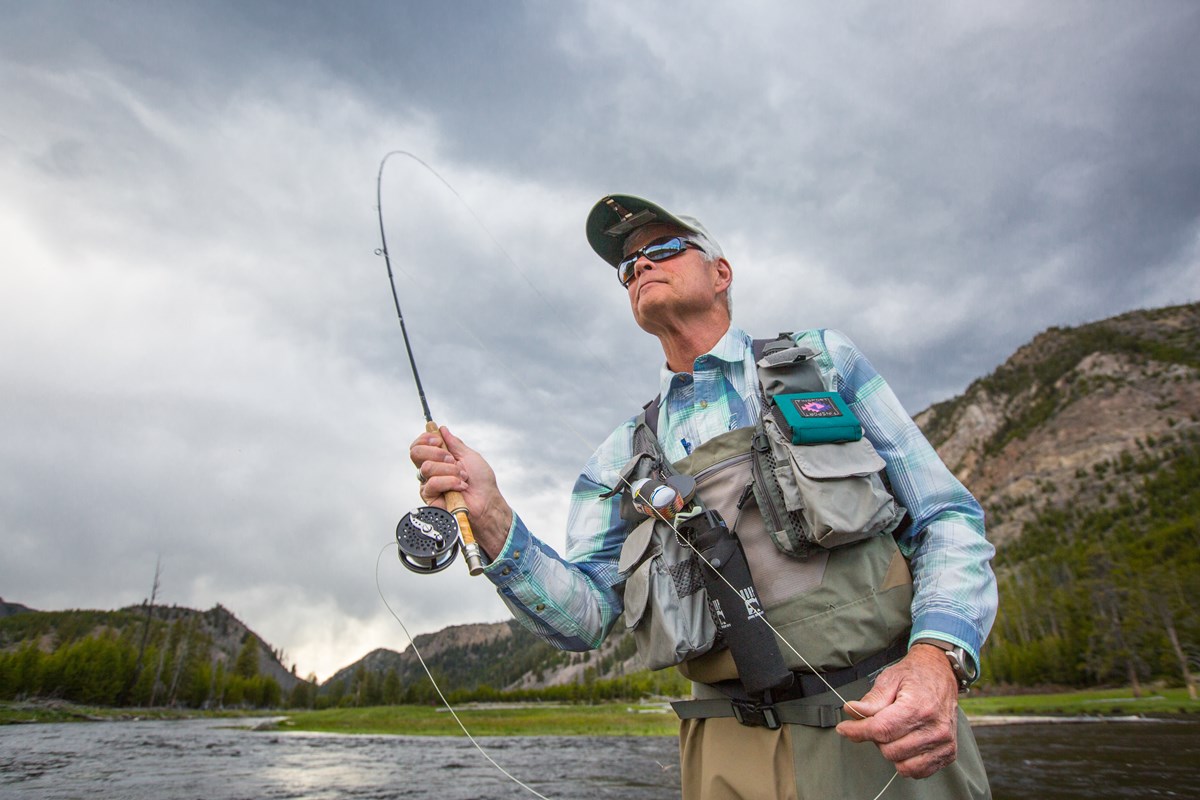
After the rod itself, the most essential part of any fly fishing set-up is the reel. Keeping your fly line in place, a good fly reel provides balance, helping you place your fly in the right position and duke it out with the fish.
You’ll find that the best fly reels come in a variety of different arbor sizes, weights, and drag types, so you can normally find one that best suits your needs. Here at River and Glen, we’re big fans of the Redington Behemoth Fly Reel, partly because it looks really cool, but mostly because it combines a very powerful drag with unbeatable durability.
Other models, you might like include the Orvis Mirage or the budget-friendly Colorado Fly Fishing Reel. With your fly reel in places, there are a few other pieces of kit you’ll need to enjoy fly fishing. These include:
Fishing Line
There’s a certain art to getting the right fly fishing line for trout and other fish. It needs to be of the right weight to suit your rod and reel so that it can send your fly soaring through the air and landing quietly near the fish.
For example, if you opt to buy our number-two ranked Piscifun Sword fishing rod, then you might find that the brand’s Braided Fly Line backing proves particularly effective. The good news is that since the fly line is pretty cheap, you can experiment with it until you find the best brand for your rod.
Leader
A leader is a handy piece of equipment used for connecting your fly to the fly line. It’s usually made from nylon or fluorocarbon and can be anywhere between six to 12 feet in length.
Leaders such as these from Rio Powerflex are so clear that they’re practically invisible to fish which better disguises the fact that your fly isn’t a tasty treat.
Tippet
Tippets may not be essential, but they’re certainly useful. They can be used to reinforce your leader and add the kind of extra length you might need for long-distance casting.
We like Anglatech’s popular fluorocarbon, 50-yard tippet, but again they’re so inexpensive that you can always experiment and find the one that suits you best.
How to Choose the Best Fly Fishing Flies
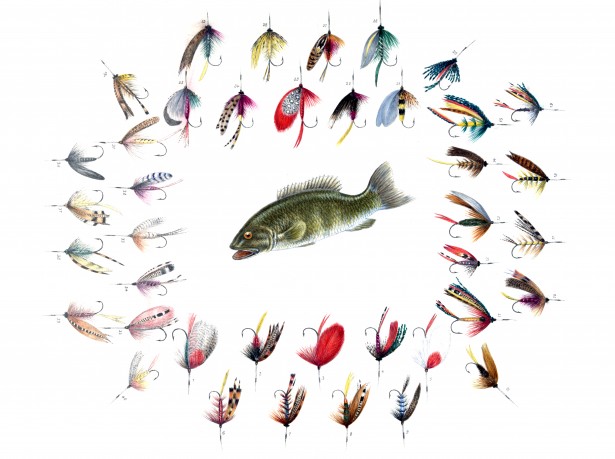
Of course, you can’t go fly fishing without some flies, but if you’re new to the sport then it isn’t always obvious which ones you should use. On the whole, there are three types of flies:
Nymphs
Nymphs imitate insects that are in the larval stage of their growth and live beneath the surface of the water. Trout, in particular, are well known for feeding on these kind of insects, which is why many fly fishers choose nymphs for catching them. That said, they can also prove useful at catching other types of freshwater fish too.
Streamers
Streamers are designed to look like various kinds of baitfish including minnows and sculpins, as well as other types of underwater fish food such as leeches. As well as brown trout, streamers can be great for catching pike and bass, but there’s no reason why you have to limit yourself. If you’re struggling with your nymphs or dry flies, opting for streamers instead should revive your fortunes.
Dry flies
Dry flies are supposed to imitate the kind of post-hatch flies and insects that you’d usually spot above the surface of a river or lake. Though they can sometimes be effective in catching trout, you’ll usually have better luck with nymphs or streamers. So, unless you’re certain that you’ll have some success with dry flies, you might want to give them a miss.
Read More:
- The Best Bait for Bluegill Fishing (Types & Best Options!)
- The Best Northern Pike Lures – How To Find The Right One?
- The Best Trout Lures That You Need to Know!
Licenses and Permits for Fly Fishing
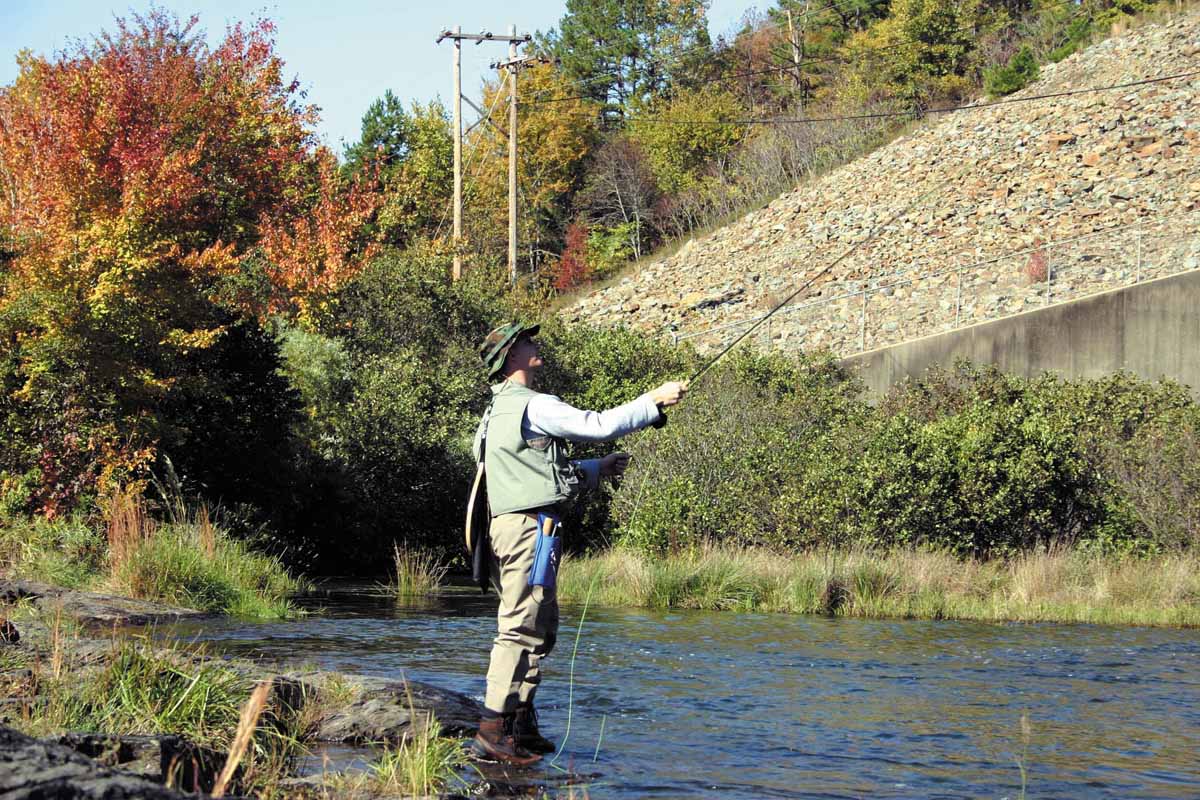
You’ve got all the essential gear, you’ve been practicing your casting in the back yard, and with those sweet waders you bought, you even look the part. Yet before you head out to the water, there’s one other very important thing you’re going to need before you can successfully start fly fishing:
A license. Every US state has its own licensing requirements for fly fishing. Often, you’ll find that licenses for fishing in your home state cost less than they do out of state. This is because most places offer discounts to residents. In Minnesota, for example, residents can buy a 72-hour license for just $14, but if you’re just visiting on vacation, then that same license will cost you $43.
Meanwhile, in Texas, residents can buy a saltwater fishing package license for $35, whereas non-residents are charged $63 for the same license.
Fishing License Exemptions
In some states, the requirement to possess a fishing license is waived for certain groups. This includes those aged under 16, those aged over 80 (or in some cases, 90), and those currently enlisted in or recently discharged from the US armed forces.
Where to Buy a Fishing License
The easiest way to buy a license for fly fishing is to do so online via the government Fish and Wildlife Service in the state you wish to fish in.
Visiting that state department in person is another quick and convenient way to get your license. Alternatively, you should find that most fishing tackle or hunting equipment stores in your area will sell also sell the license you need.
FAQ’s About Fly Fishing
What do you catch with fly fishing?
Fly fishing is mostly renowned as a method for catching trout, salmon, and grayling, but is also used for a number of other species which include bass, panfish, pike and carp.
Is fly fishing hard to learn?
Fly fishing is not easy. The most difficult aspect of learning how to fly fish is understanding the cast, and then like with most things, putting in plenty of practice.
Can you fly fish anywhere?
You can fly fish anywhere where fish live, however ideally in warm water lakes, cold-water rivers, and the ocean.
How do you set up a fly fishing line?
Start by attaching your fly reel to your rod. Usually, this is no more difficult than sliding the reel into place and locking it in, but if you’re struggling, simply follow the manufacturer’s instructions. Next, use a strong knot to attach your backing line to the reel.
Then take roughly two or three feet of fly line and attach the back end to the backing. Most lines have a sticker which lets you know which end is which, but if yours doesn’t, the general rule is that the thinnest, lightest end of the line is the back.
Experts recommend using a nail knot to attach your fly line to the backing. After this is done, pull off another twenty or thirty yards of fly line, depending on how much you’re going to need, and loop the weighted end of your line in a braided knot. You can then attach your leader using a loop-to-loop connection, and then use a double surgeon’s knot to add the tippet to your leader. Finally, attach your fly to the tippet and you’re all set to fish!
Read More:
- How To Find The Best Catfish Reel and Which To Buy
- The Best Fishing Line for Trout – What to Look For & Top Recommendations!
What gear do you need for fly fishing?
At a bare minimum, you’re going to need a rod, reel, fly line and a collection of flies. You’ll also benefit greatly from investing in the backing line, a leader to help you attach your fly to the fly line, and a tippet to reinforce your leader. Waders and a pair of wading boots will prove invaluable for those times when you have to get into the water to go after your fish.
Though often overlooked, a pair of polaroid sunglasses are also very important to protect your eyes. It’s not unheard of for a fly to soaring through the air and catch an unprepared fisherman right in the eye, causing some nasty damage, so get those glasses on. Finally, you’ll thank yourself for buying a fly box to keep all your flies in, and a tackle box to hold your entire kit.
Summing Up: Is Fly Fishing a Good Option For Beginners?
Compared to bait fishing, fly fishing might not seem like the best way to get started if you’re interested in learning how to catch fish.
As you’ll have seen in our guide to the best fly fishing rods and other essential equipment, the cost alone can be off-putting for those looking for a more budget-friendly hobby. Meanwhile, perfecting the skill of casting often takes some time, so you should be prepared to put in some practice time to ensure maximum enjoyment while out on the water.
Still, if you’re serious about taking up the sport, then don’t let those two factors put you off. Even though it may cost more than a bait setup, you can still get a good deal on fly fishing gear if you shop around, and once you’ve got the hang of casting, you’ll find that no other form of fishing offers quite the same thrills and excitement as fly fishing.
If you enjoyed this guide, you might also like our look at the best spinning rods for trout, or how about our pick of the very best catfish reels?
